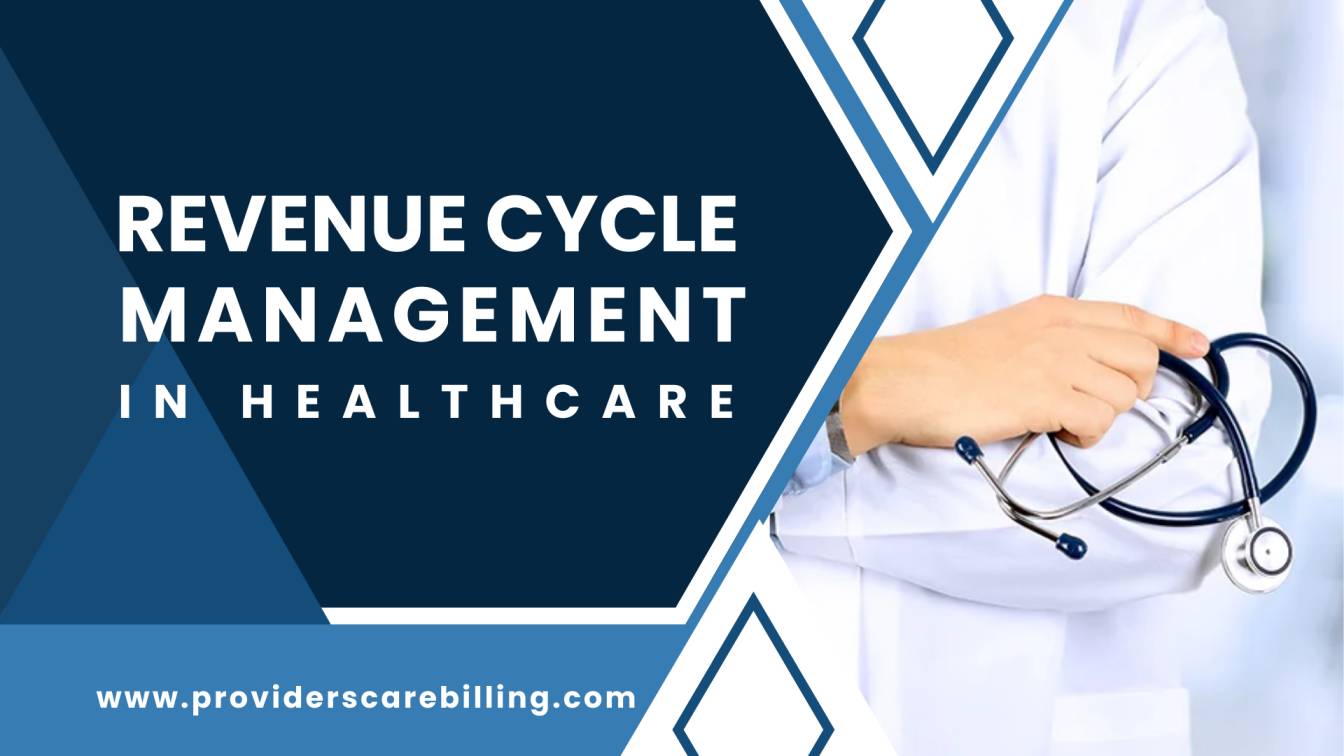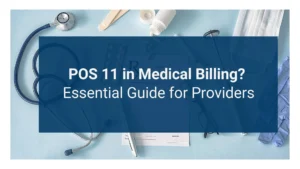Revenue cycle management is used by hospitals, small practices, and larger healthcare systems to track patient revenue. Besides saving lives and treating patients, every healthcare organization requires developing successful processes and policies for their payment of the balance. For this purpose, the financial process is vital in ensuring healthcare organizations stay operating to treat patients. Facilities use healthcare revenue cycle management to collect profits and keep up with expenses.
Healthcare revenue cycle management is an invaluable part of the financial procedure used to manage administrative and clinical functions. The revenue cycle starts with the appointment or visit and ends when the provider or hospital receives payment fully for the services they provide. It is also related to claims processing, charges, and revenue generation. The procedure consists of identifying, managing, and collecting patient service revenue. Healthcare Revenue cycle management reduces the time between service delivery and payment receipt. It provides detailed reports and analytics around payments and accounts receivables to give the organization full revenue transparency.
Difference between Medical Billing and Revenue Cycle Management
The medical billing process involves submitting claims for provided services to Individuals. Furthermore, it consists in following up on claims with health insurance companies, managed care organizations, and government programs. Detailed support data is needed to submit with every claim. The claims can be rejected for various reasons due to incorrect data.
While the RCM is related to the financial circulatory system of an organization, in healthcare, this would deal with both the clinical and administrative functions necessary to continually bill, collect and manage payments. It includes determining patient eligibility, documenting, services delivery procedure, coding, submitting and handling claims and charges. The Revenue Cycle Management process analyzes, validates, and tracks all claims and quickly identifies errors to reduce denials.
Seven Steps of the Revenue Cycle of a Healthcare Practice
RCM ensures the patient’s financial journey proceeds smoothly without a hitch and avoids revenue leakage; the RCM system can’t skip a single step:
1. Pre-registration
The foremost step in revenue cycle management is Pre-registration. It permits the medical practice to get patients’ insurance, demographic, and financial information. The information is automated to the patient’s insurance and flows through the provider’s practice management system. It gives the provider the patient’s coverage, deductible, co-insurance, or co-payment. It provides an insight into how you will be paid for different services and benefits patients by preparing them for their financial responsibility.
2. Registration
Registration ensures that the patient’s information is accurate and precise throughout the process. During registration, the provider provides the patient’s address, phone number, date of birth, guarantors, and correct insurance information from A to Z. They must secure this data each time a patient is treated.
3. Charge Cycle
The charge cycle can be operated automatically or manually in the revenue cycle process. In an automatic system, the information flows automatically and is updated accordingly as the provider enters the data. The service provider gains access to critical coding tools that help to code more accurately, ensuring timely reimbursement. While in the second old-fashioned way, the staff enters the data manually, which is handled manually.
4. Claim Submission
After entering the charges, the provider sends the information to the insurance for claim submission and to make sure claims are fair and going to the right door. The revenue cycle team will take an insight into the CPT code, diagnosis code, and CPT code. They will check whether the diagnosis supports the procedural activities and identify where there is a need for code correction.
5. Remittance Processing
After practice claiming the remittance process is the next step in the revenue cycle. The providers will be getting paid for their services. However, during this procedure, allowable are identified to whom providers have contracted with the insurance carrier and service provision. The contract is signed between two parties, and insurance will confirm about payment amount.
6. Insurance Follow up
The next step is insurance follow-up, which deals with what has been paid and what has not been paid. What was the reason that few of the items were left unpaid? The accounts receivable (A/R) report reveals everything related to the patient’s bucket and insurance. This report will evaluate why payment is delayed and process flaws that need to be addressed to cut down on future denials.
An essential piece of insurance follow-up includes:
- Are people assigned certain carriers?
- Is the practice management team working on this insurance?
- Is your billing team trained in a multidimensional way for different tasks?
- Do you see any noticeable changes on the monthly?
- Do you have an additional billing person who can work?
- Are claims being appealed, or are they being resubmitted?
7. Patient Collection
The most important part of the revenue cycle process is the collection of payments from patients. The trained staff is best for collecting money and preventing backlog; make sure you have a standard policy for managing income. To best manage the revenue cycle, there is a requirement to make sure that status updates on all claims, including historical data, and daily, weekly, and monthly reporting on key metrics, such as accounts receivable. It will allow the revenue cycle to move better, and cash flow will accelerate uninterruptedly.
The Benefits of the HealthCare RCM Process
A strategic approach to revenue cycle management provides hospitals and health systems with numerous benefits. On the other hand, poor management and billing practices can result in financial losses for the entity. The benefits of an effective RCM process to hospitals and health systems can include
- RCM helps organizations save time by streamlining processes, from patient Pre-registration and registration to appointment and payment reminders to engaging payors regarding claims and denials.
- By lessening or eliminating errors in payment claims, RCM can also alleviate the denial rate, expediting payments to the organization.
- RCM can assist hospitals and health systems in detecting mistakes on time and making them quickly fixed.
- Efficacious RCM can help expedite the collection process, reducing the administrative burden around preparing bills, submitting claims, and collecting payments.
- Organizations can minimize the administrative costs associated with managing their revenue with a reduced time commitment and lower unexpected errors. Providers can generate more revenue from data-driven billing and collection procedures.
- Finally, RCM aims to facilitate and streamline the revenue cycle and permit hospitals and health systems to consolidate more on furnishing quality care and an optimal end-to-end patient experience.
An efficient Revenue Cycle Management provides friction-free solutions from booking appointments to paying bills to create a more satisfying experience. It enables an organization to stay financially viable and focused on delivering an exceptional patient experience. Once the patient’s invoice has been issued, the software can be used to create a compassionate and convenient payment experience and complete the healthcare revenue cycle.




